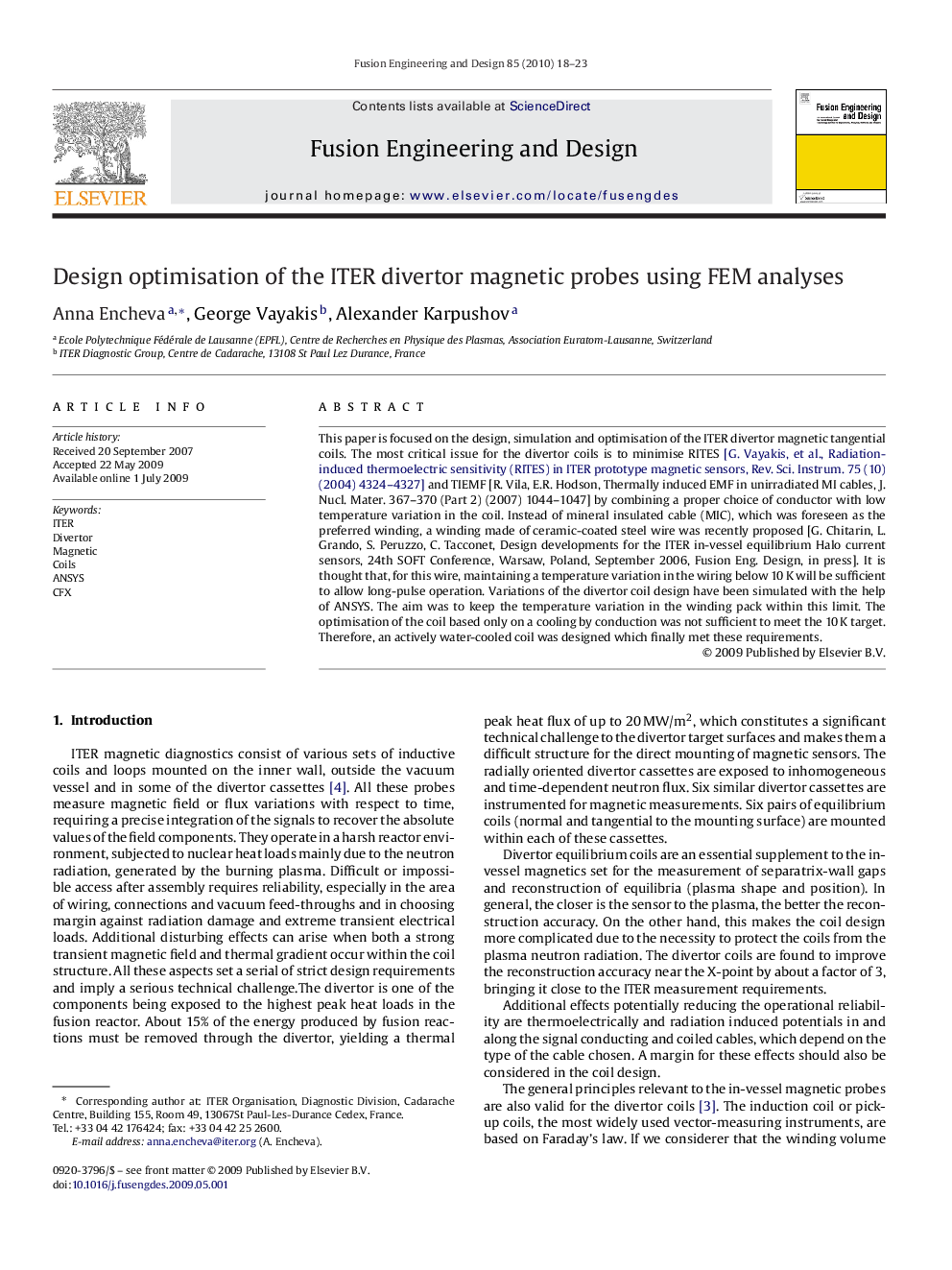| کد مقاله | کد نشریه | سال انتشار | مقاله انگلیسی | نسخه تمام متن |
|---|---|---|---|---|
| 272177 | 505015 | 2010 | 6 صفحه PDF | دانلود رایگان |

This paper is focused on the design, simulation and optimisation of the ITER divertor magnetic tangential coils. The most critical issue for the divertor coils is to minimise RITES [G. Vayakis, et al., Radiation-induced thermoelectric sensitivity (RITES) in ITER prototype magnetic sensors, Rev. Sci. Instrum. 75 (10) (2004) 4324–4327] and TIEMF [R. Vila, E.R. Hodson, Thermally induced EMF in unirradiated MI cables, J. Nucl. Mater. 367–370 (Part 2) (2007) 1044–1047] by combining a proper choice of conductor with low temperature variation in the coil. Instead of mineral insulated cable (MIC), which was foreseen as the preferred winding, a winding made of ceramic-coated steel wire was recently proposed [G. Chitarin, L. Grando, S. Peruzzo, C. Tacconet, Design developments for the ITER in-vessel equilibrium Halo current sensors, 24th SOFT Conference, Warsaw, Poland, September 2006, Fusion Eng. Design, in press]. It is thought that, for this wire, maintaining a temperature variation in the wiring below 10 K will be sufficient to allow long-pulse operation. Variations of the divertor coil design have been simulated with the help of ANSYS. The aim was to keep the temperature variation in the winding pack within this limit. The optimisation of the coil based only on a cooling by conduction was not sufficient to meet the 10 K target. Therefore, an actively water-cooled coil was designed which finally met these requirements.
Journal: Fusion Engineering and Design - Volume 85, Issue 1, January 2010, Pages 18–23